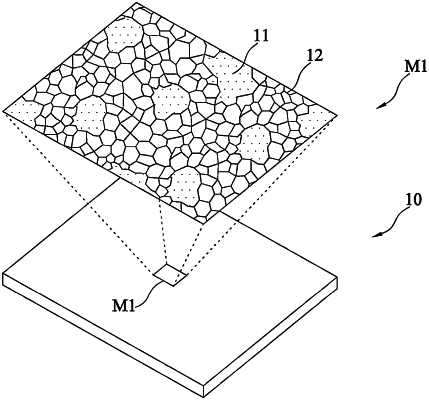| CPC H01B 1/124 (2013.01) [B29C 45/0001 (2013.01); B29C 45/17 (2013.01); H01B 1/08 (2013.01); H01B 1/122 (2013.01); B29K 2509/02 (2013.01); B29L 2031/3406 (2013.01); C25D 5/56 (2013.01)] | 20 Claims |

|
1. A flexible electrode, comprising:
an organic soft matrix comprising a conductive polymer and a binder, wherein the binder is water-soluble and ionically conductive; and
an inorganic hard material comprising an opened-perforated layer structure formed by a plurality of aggregated silicate lamellar blocks, wherein the organic soft matrix is filled in open pores of the opened-perforated layer structure to form a three-dimensional network structure having an organic phase domain and an inorganic phase domain interlaced with each other, and each of the aggregated silicate lamellar blocks comprises a plurality of silicate lamellae, wherein the silicate lamellae are stacked face-to-face in a stacking direction parallel to a thickness direction of the organic soft matrix;
wherein a content of the silicate lamellae ranges from 25 wt % to 35 wt %, a content of the binder ranges from 15 wt % to 25 wt %, and a content of the conductive polymer ranges from 45 wt % to 55 wt %.
|